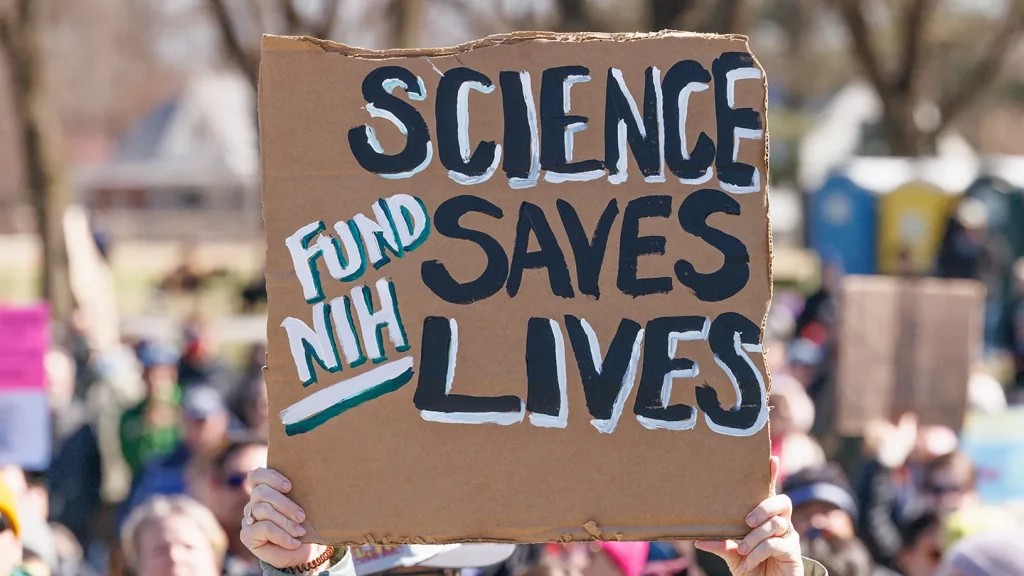Federal Research Funding Cuts Shock Scientific Community in 2025
In a sweeping policy shift that has sent ripples through America’s scientific establishment, the Trump administration has implemented dramatic cuts to research funding in 2025, affecting thousands of ongoing studies across the country. More than 3,800 research grants from the National Institutes of Health (NIH) and the National Science Foundation (NSF) have been either terminated or frozen as part of what the administration describes as an effort to “realign funding priorities” in American scientific research. The cuts, totaling approximately $3 billion in remaining funds, have primarily targeted initiatives related to diversity and inclusion, environmental protection, vaccine education, and various public health programs that were previously considered essential components of the national research agenda.
Among the most significant casualties is Northwestern University’s Lurie Cancer Center, which lost $77 million in remaining funds – the largest single cut to any NIH grant. The center has long served as a national hub for cancer research, providing critical care and community outreach while coordinating research efforts across multiple institutions. Scientists at Lurie were in the midst of several promising clinical trials and research initiatives when funding was abruptly frozen, leaving many projects in limbo and raising concerns about the continuity of patient care programs that depended on this federal support. Many researchers have expressed alarm that cutting funding to established cancer research centers could delay potential breakthroughs and ultimately cost lives, as the complex infrastructure that supports coordinated cancer research takes years to build and cannot easily be reconstructed once dismantled.
The NSF’s INCLUDES initiative, designed to make the STEM workforce more diverse by addressing systemic barriers, suffered the largest termination within that agency, losing $9 million in remaining funds. This initiative had served as a coordination hub connecting hundreds of researchers, organizations, and community groups working toward broadening participation in science and engineering. The program had been widely praised for its evidence-based approach to addressing persistent underrepresentation in technical fields, with early data suggesting promising outcomes in increasing participation among women and minority students in STEM education pathways. Critics of the cuts argue that they threaten America’s competitiveness by limiting the talent pool at a time when other nations are expanding their scientific workforces, while supporters contend that merit alone should determine scientific advancement.
More targeted cuts reveal the specific priorities being reshaped by the administration. A $200,000 grant aimed at understanding and reducing COVID-19 vaccine hesitancy among young Black adults in three Southern states was terminated completely. Similarly, a University System of Maryland program designed to increase the number of underrepresented college students in STEM fields lost $1.7 million that would have funded research on the impact of these efforts across gender, ethnicity, and transfer status. Even seemingly apolitical research has been affected – a grant investigating how neurons regulate specialized immune cells in the retina lost $490,000 in remaining funding, with speculation that the grant’s mention of cellular “diversity” may have triggered its inclusion in the cuts, as the administration has flagged such terminology as problematic in research contexts.
The data on these terminations comes from Grant Witness, a project tracking NIH and NSF grant terminations through government databases and researcher submissions. While the administration has characterized the cuts as necessary to refocus scientific research on “priorities that benefit all Americans,” many in the scientific community view them as ideologically motivated and potentially damaging to America’s position as a global leader in research and innovation. Professional scientific societies have issued statements of concern, noting that the interrupted research represents years of effort and expertise that cannot be easily restarted. Some affected researchers have begun seeking alternative funding sources, including private foundations and state-level grants, though these typically cannot match the scale of federal support.
The long-term implications of these funding shifts remain unclear, but immediate effects are already visible across research institutions nationwide. Universities are scrambling to retain talented researchers whose projects have been defunded, while graduate students and postdoctoral researchers face uncertain futures as their supporting grants disappear. Some scientific leaders have warned that the cuts could trigger a “brain drain” as researchers seek more stable funding environments internationally. Meanwhile, communities that benefited from health outreach programs tied to these grants are seeing services reduced or eliminated. As the scientific community adjusts to this new funding landscape, the debate continues about the proper role of government in directing research priorities and whether scientific inquiry benefits from political guidance or requires insulation from ideological shifts in administration.














